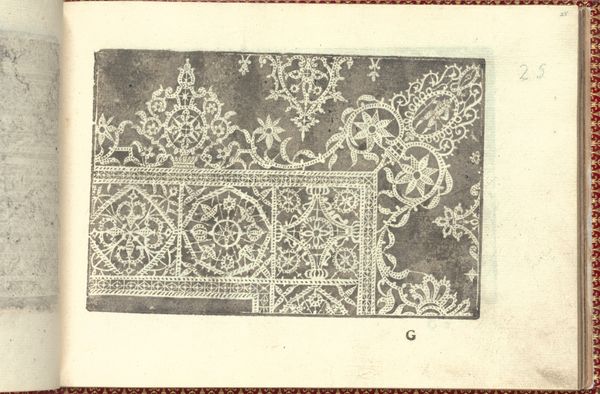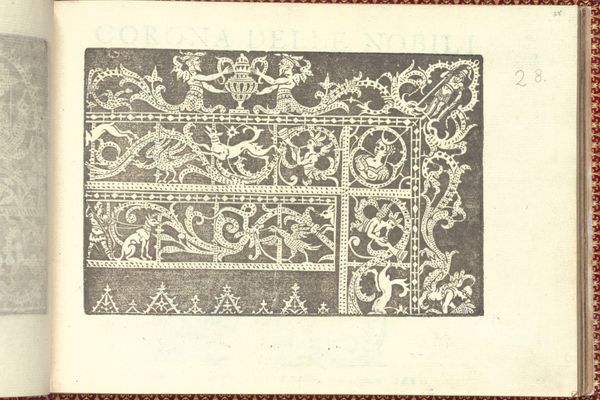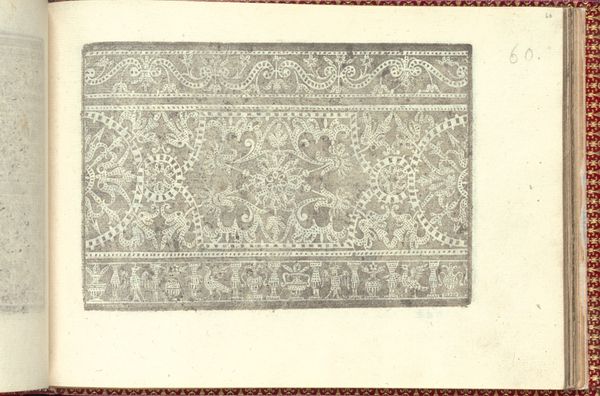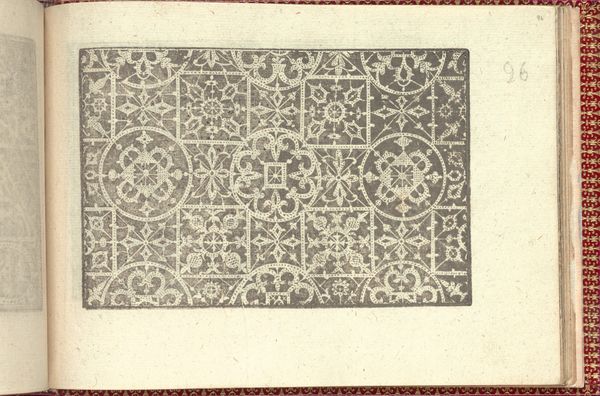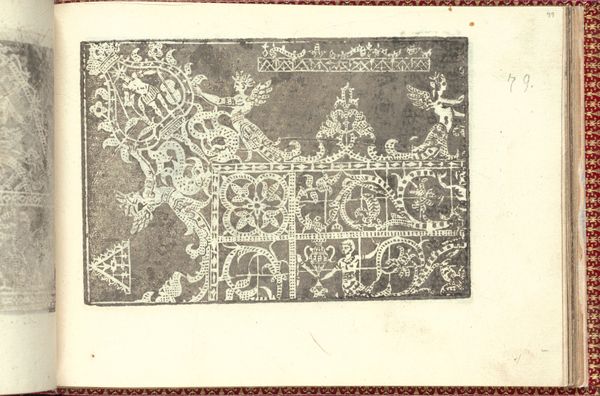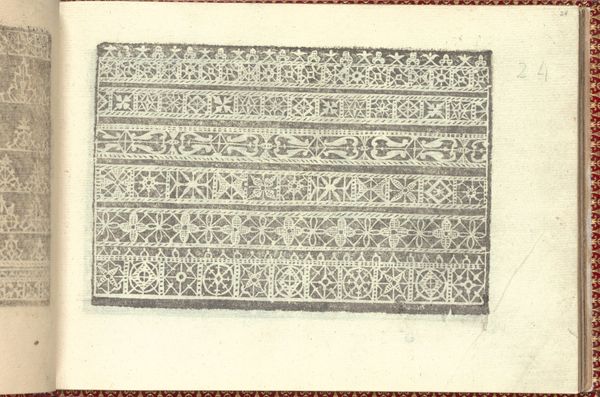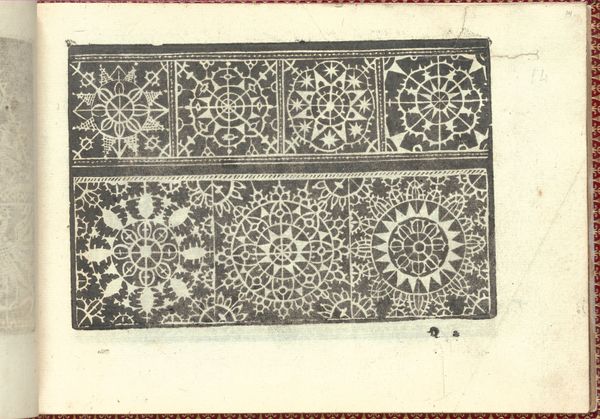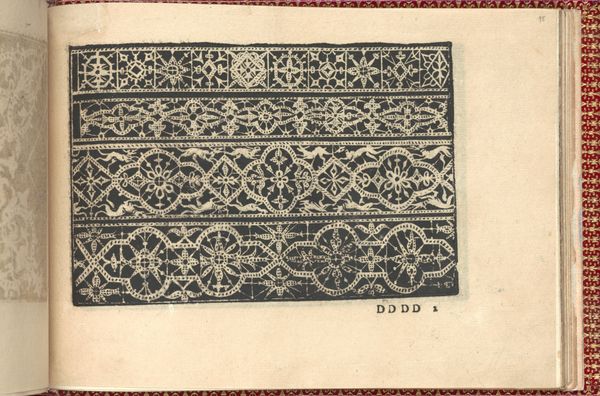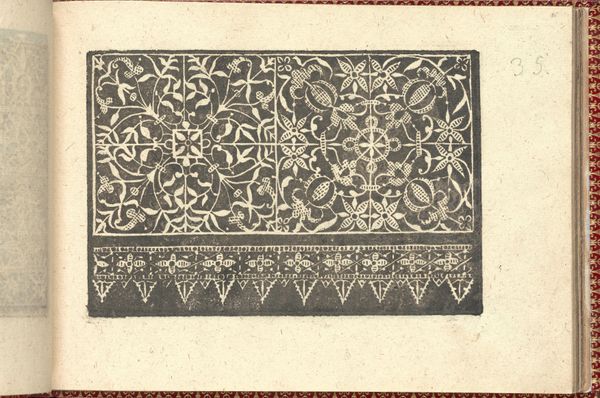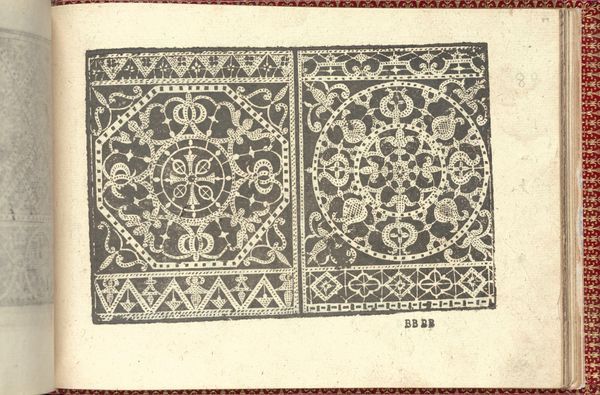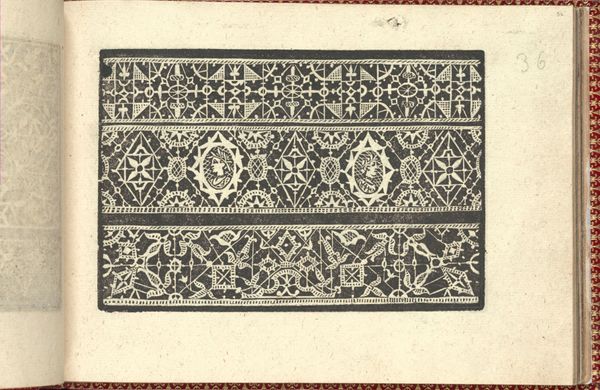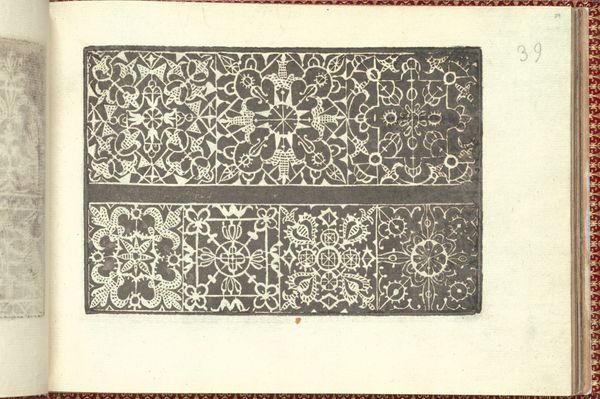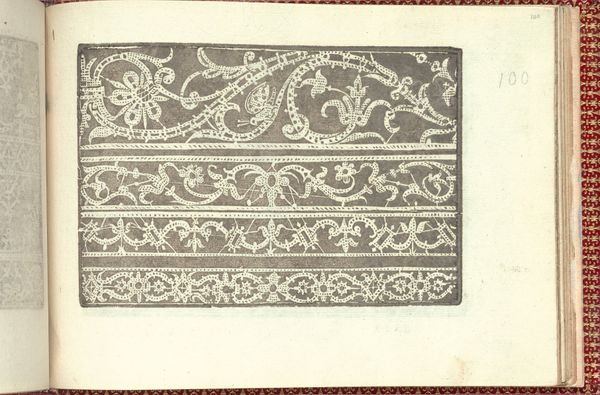
Corona delle Nobili et Virtuose Donne: Libro I-IV, page 59 (recto) 1601
0:00
0:00
drawing, ornament, print, engraving
#
drawing
#
aged paper
#
ornament
# print
#
book
#
old engraving style
#
sketch book
#
hand drawn type
#
personal sketchbook
#
ink colored
#
pen and pencil
#
men
#
pen work
#
sketchbook drawing
#
italian-renaissance
#
italy
#
sketchbook art
#
engraving
Dimensions: Overall: 5 1/2 x 7 11/16 in. (14 x 19.5 cm)
Copyright: Public Domain
Editor: So, this is page 59 from *Corona delle Nobili et Virtuose Donne: Libro I-IV* by Cesare Vecellio, dated 1601. It’s a print, basically a page of ornamental designs. I'm struck by how intricate each of these patterns is – almost like a textile sample book. How might these designs have functioned in their time, culturally speaking? Curator: That’s a crucial point to consider. These weren’t just pretty pictures; they served a distinct socio-cultural purpose. Vecellio’s book acted as a pattern book for lacemakers and other artisans. The designs, with their intricate knots and geometric forms, spoke to the rising demand for luxury goods among the noble and virtuous women—as the title suggests—of the time. What does that tell us about the status of craft and design within the cultural economy? Editor: That these crafts were clearly linked to wealth and status, but how did the *act* of disseminating patterns in print influence craftsmanship at the time? Wouldn’t making designs so widely accessible change the landscape of Italian design production and consumption? Curator: Exactly! The printing press democratized design, yet paradoxically, also codified certain aesthetic standards tied to specific social strata. Books like Vecellio's facilitated wider consumption and reproduction, but also introduced a kind of visual authority. The "Nobili et Virtuose Donne" who employed these patterns were performing their social role. Think about the rise of fashion and how publications started defining "taste." Editor: It's fascinating how something seemingly decorative reveals so much about social dynamics. I hadn't considered the impact on production and who it empowered…or didn’t. Curator: Precisely! Examining the agency behind these designs forces us to think about who benefited most from this explosion of accessible ornament. The art isn’t just in the making; it's in understanding who it serves and the wider structures that support it. Editor: Thanks, it gave me a whole new framework for evaluating this piece and its function in early modern Italy.
Comments
No comments
Be the first to comment and join the conversation on the ultimate creative platform.
